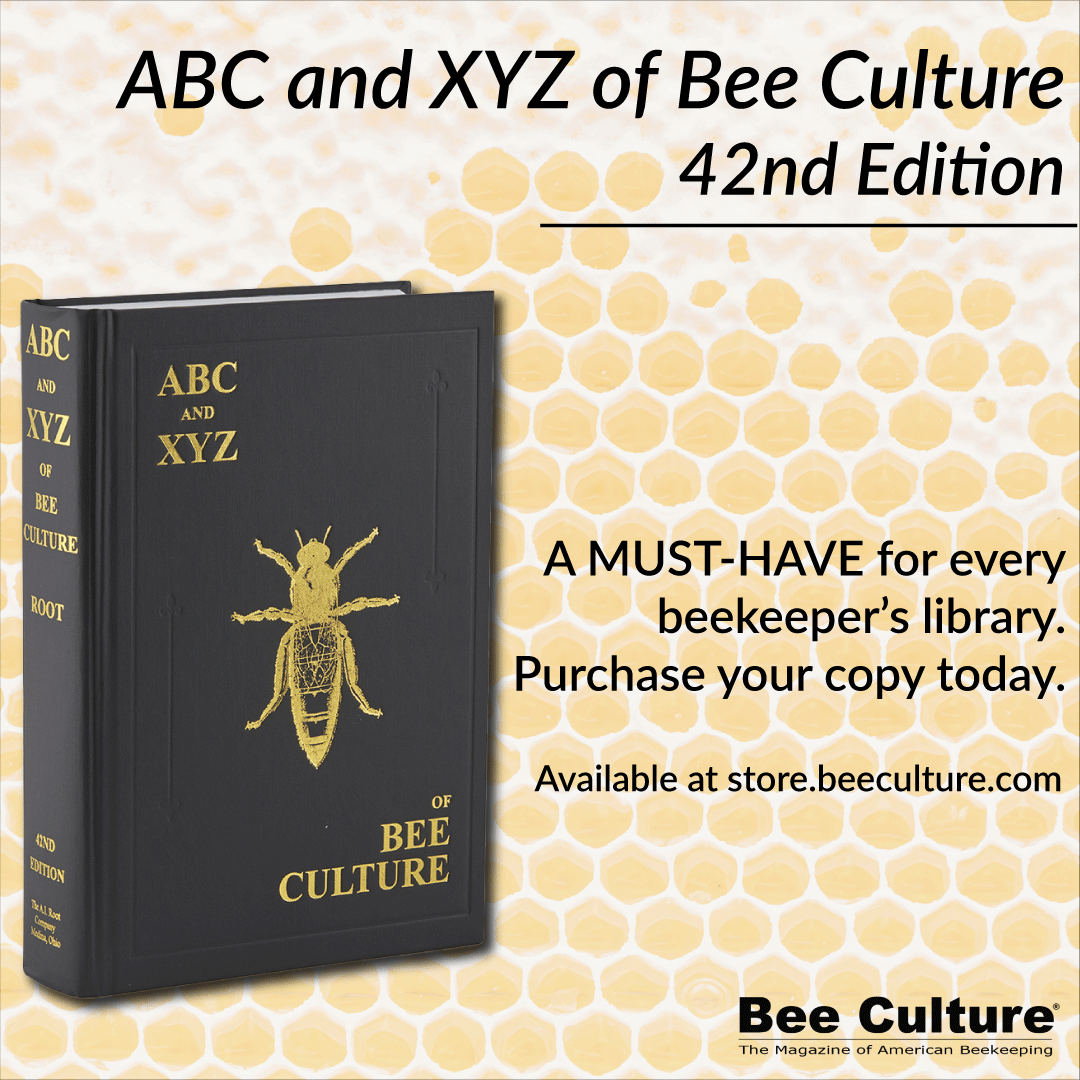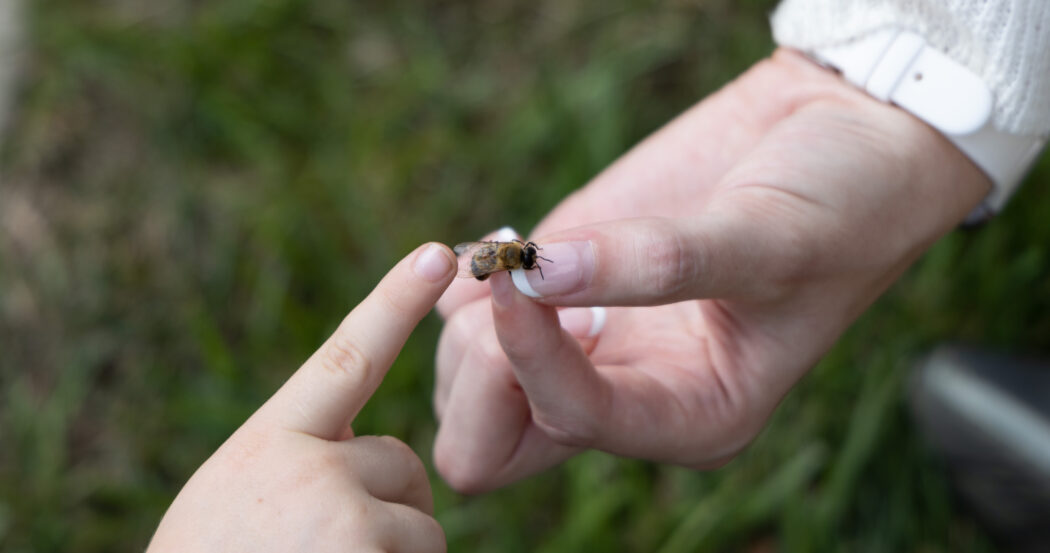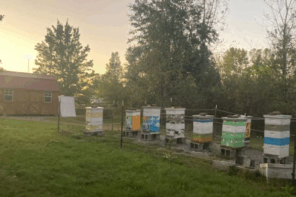Click Here if you watched/listened. We’d love to know what you think. There is even a spot for feedback!
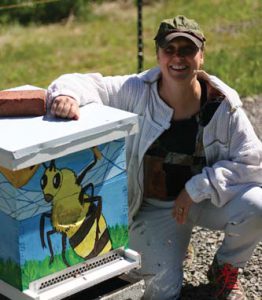
Why Would God Put a Stinger on a Honey Bee?
By: Dr. Tracy Farone
I recently heard a new country song on the radio (yes, I am so old that I still listen to country radio). The song told a story about a dad marveling over the innocent perspective of his little girl’s questions as they traversed on road trips. One of her questions was “Why would God put a stinger on a honey bee?” Certainly, this seemingly childlike question has great biological and spiritual implications. So, I wondered how I would answer and explain this little girl’s inquiry, from both perspectives.
The implication, even accusation, is that placing something that can cause pain on a sweet thing is a puzzling, mean act of God or Nature. This way of thinking may be endearing in the naivety of a child, but in reality, is worthy of a logical defense to understand the rationale behind the design.
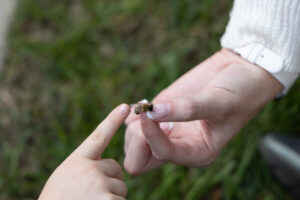
1. Not all honey bees have stingers, like this drone. Photo Credit: GCC Bee Project (Farone Lab). Photo taken by Dr. Greg Bandy.
In the science of Biology, we study diverse types of mechanisms that plants and animals use to adapt to their environment. Defense mechanisms are analogous to strategies humans use in military operations. Most of these adaptations are truly defensive in nature with a few being offensive. Whether by God’s design, natural selection, or both, these mechanisms are necessary to equip many species for survival in an arduous world. Here are a few examples:
Camouflage: Many animals use color and/or texture camouflage to blend in to their environment. Some animals like cuttlefish can even change their color to deter rivals.
Mimicry: Presenting oneself as a formidable opponent is a bluff used by animals. The king snake mimicking a coral snake is one common example.
Chemical Warfare: Several animals are capable of producing chemicals that will deter, harm or kill any threats. Bombardier beetles’ hot chemical spray, skunk spray and snake venom are all examples of animals using chemical weapons to protect themselves.
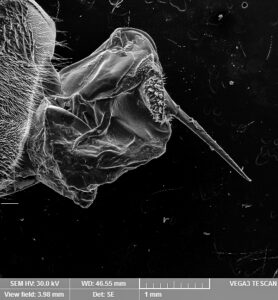
2. High magnification of a honey bee’s stinger and venom sac. Photo Credit: GCC Bee Project (Farone Lab). Photo taken by Dr. Jeff Wolinski.
Physical Armaments – defensiveand offensive: Many animals use various types of shields, great strength, agility and weapons on display to deter adversaries. Electric eels carry a 600-volt charge. Porcupines and turtles possess formidable shields. Horns, antlers and tusks are weapons on display, and the coordinated kick of a zebra can break the jaw of a lion.
Strategic Behavioral Plans: Deceiving the enemy can be an effective strategy. Playing dead, avoidance or feigning injury to redirect predators are strategies used by multiple species.
Group Defense: Working together to overwhelm the opposition is seen in many herd and flock animals, not to mention yiping prairie dogs (1).
The National Guard: Individual immune systems can be called up to defend us against zillions of microscopic pathogens using physical, chemical, and cellular means, adapting on a day-to-day basis.
One could easily present an argument that honey bee colonies have multiple defensive adaptations in most or all of these categories. Consider which categories you would place the stinger, venom, guard bees, propolis, alarm pheromone, vitellogenin, flying off when sick, etc…?
So why are honey bees gifted with so many defensive adaptations? Because they have many valuable things to protect from numerous foes wanting to rob and pillage their colonies. Bees must visit over 2 million flowers and fly a distance equal to twice around the equator of the Earth to make a pound of honey (2). Their hard-earned nectar, honey and pollen are desirable and rich nutritional resources. Their brood, momma, sisters and brothers are also in need of protection.
Yet honey bees tend to be less aggressive than many bees or wasps, only stinging when absolutely necessary, as stinging equals laying down their life for the colony. The sting and venom release causes pain to the intruder, a strategy of negative reinforcement with the purpose of building a reputation of fear and caution around bees. Developing this type of reputation is a kind of peace through strength strategy. Also, during the sting, alarm pheromone is released in large quantities calling in other colony members, much like an emergency 911 call for back-up.
I am sure most of us can relate to the honey bee’s situation. We work hard and do not want anyone to invade our homes, steal our investments of time and hard work and/or endanger our family. Most of us would fight to protect our family and home. It is not a fight we would ever desire but one we would likely lay down our life for, if absolutely necessary.
So why would God put a stinger on a honey bee?
It is a gift. The gift of being equipped to protect oneself and others. A gift not to be used lightly, but only in extreme circumstances. The intension is for a few to risk their lives for the many, exuding power through the display of strength.
This July, as our republic celebrates its 249th birthday, as one nation, under God, indivisible with liberty and justice for all, be thankful for the gifts and rights bestowed on us. Special thanks to our veterans, troops and police officers for their gifts of service and safety, guarding our families and communities, willing to lay down their lives for another.
References and Resources
- https://decodingbiosphere.com/2025/01/14/7-fascinating-defense-mechanisms-of-animals/ Accessed 05-03-25.
- https://honeycouncil.ca/how-to-make-a-pound-of-honey/ Accessed 05-06-25.
- https://beekeepersrealm.com/honeybee-defense-mechanisms-natures-ingenious-protectors/ Accessed 05-03-25.
- https://biologynotesonline.com/adaptation-definition-types-reasons-examples/ Accessed 05-03-25.
- https://www.honeyassociation.com/about-honey/honey-trivia Accessed 05-06-25.
Dr. Tracy Farone, DVM is a Professor of Biology at Grove City College in Pennsylvania. Dr. Farone manages two apiaries with the help of her research students. Her most recent publication is “Honey Bee Vet: The adventures of a veterinarian seeking to doctor one of the world’s most important animals”.



